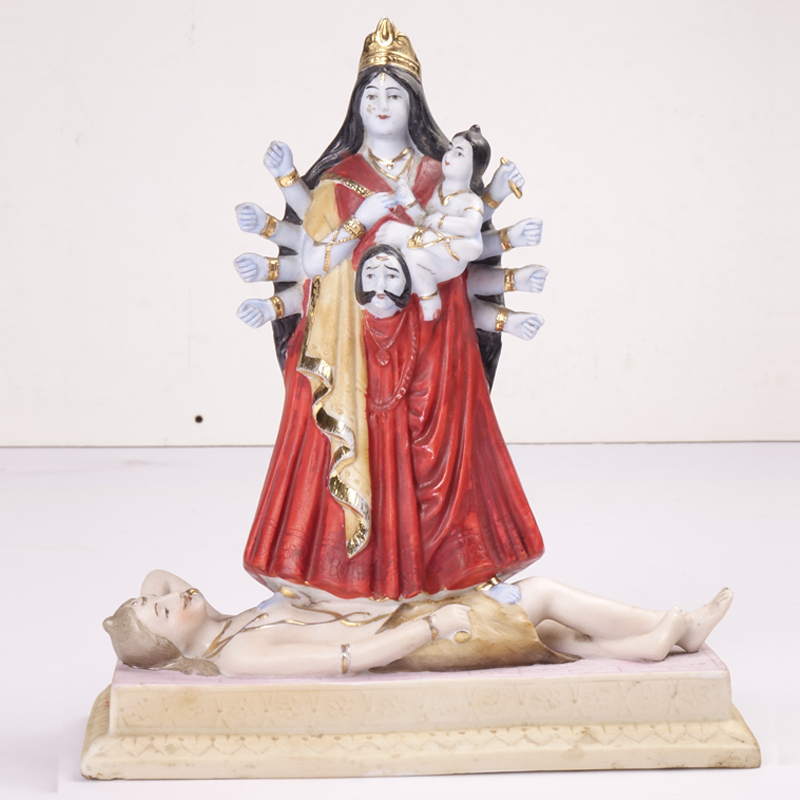Kali
Description
Devi or the great goddess is the divine feminine aspect that is being worshipped by Indians throughout the ages. She is worshipped in both benevolent and ferocious form and known by various names like Uma, Gauri, Parvati, Jagadamba, Bhairavi, Durga, Kali, Chandi, Bhavani, Chamunda and so on. Her worship symbolizes the acceptance of female energy.
Since prehistoric times female energy is worshipped as a giver of life and fertility. Indus Valley sites (2600- 1900 BCE) have yielded a large number of female clay figurines which are probably of mother goddesses.
During the Gupta period (320- 647 CE) the worship of the Great Goddesses gained popularity. By this time the text- 'Devi Mahatmya' glorifying Devi was composed. Devi Mahatmya considers that Devi represents all three aspects – Prakriti (creation), Maya (illusion) and shakti (power). She creates, pervades and sustains the Universe. Shakti here is not a consort of male deity but rather she is a universal phenomenon, the sole reality.
The goddess is worshipped in her benign (Saumya) and ferocious (Ugra) forms. In her ferocious form, she is the slayer of demons like Madhu-Kaitabh, Mahishasura, Shumbha, Nishumbha. She has several manifestations that are dreadful, dangerous and bloodthirsty.
Gift of Smt. Rekha Naik in memory of Late Dr. Deepak Srinivas Naik
Collection
European Decorative Art
Object Type
Figurine
Material
Porcelain with polychrome glaze
Schools/Culture/Period
--
Technique
--
Date
Early 21st century CE
Location
Germany
Dimension
--
